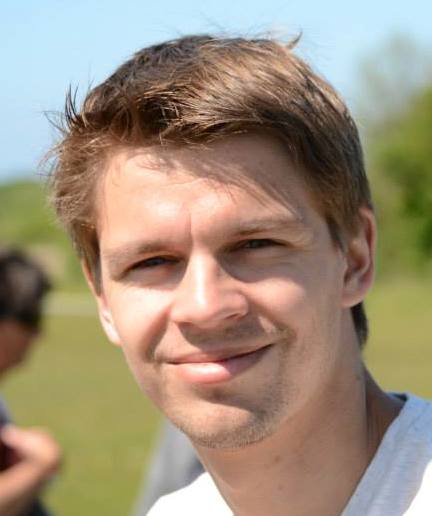About me
For all my instagram fans. My employer is ESO, but in my daily activities I work for the telescope ALMA.
Hi! I am an astronomer at ESO, working in the EU ALMA Regional Center. Prior to this I was a fellow at ESO in Garching and the Max Planck Institute for Astronomy in Heidelberg and a PhD student at the Kapteyn Institute for Astronomy in Groningen, the Netherlands. My scientific work focuses on galaxy formation and evolution through theoretical models and sub-mm observations. Besides that I have a tremendous passion for ballet, exploring the Alps, and using satellites to find tupperware in the woods.
Below you'll find more about my research interests.
Research Interest
Galaxy formation and evolution
I am a theoretical astrophysicist working on open problems in galaxy formation and evolution. My particular interests includes the evolution of the ISM in galaxies, consisting of gas, dust and metals. The ISM is a key component of galaxies that ultimately controls the build up of stellar mass. My research centers around a number of different projects utilizing different tools.
Galaxy formation models: Most of my research makes use of semi-analytic galaxy formation models in which I included recipes to track the atomic and molecular hydrogen content, as well as the dust content of galaxies. This model provides key predictions for the ISM of galaxies that can be tested with the newest generation of telescopes such as ALMA, the SKA, and other millimeter and radio instruments. I recently started working the IllustrisTNG simulations, to better understand the resolved properties of galaxies.
Dust in galaxies: My most recent interest is dust in the ISM of galaxies. Dust is an important ingredient for ISM physics, but nevertheless proper tracking of dust is often ignored in cosmological models of galaxy formation. In a recent work we introduced the tracking of dust in a semi-analytic model of galaxy formation. In forthcoming work we will introduce dust-dependent physics in our models, to explore the importance of dust on the buildup and appearance of galaxies.
Radiative transfer models: Many of the predictions from theoretical models can not be directly observed by telescopes. To bridge the gap between models and observations I developed tools to make direct predictions for some of the observables of gas in galaxies. These include for instance CO, [CII], and HCN emission, but will soon also include the sub-mm continuum of galaxies. We are planning to include the results of our chemical evolution models that track the dust content of galaxies in our radiative transfer modules.
Semi-empirical models: Semi-empirical models are a great approach to obtain a data-driven understanding of galaxy formation and evolution. I developed novel tools to infer the gas content of galaxies based on just a number of observables. We coupled this tool to abundance matching models, but also to large galaxy surveys providing data-driven predictions for more than 30 000 galaxies over cosmic time. This marks a unique approach to learn more about galaxy gas content.
The IRX - Beta relation: I recently became very interested in the absorption and re-emission of light and in approaches to correct for dust-obscured emission. The IRX - Beta relation is often used to account for the obscured UV emission of galaxies when measuring star-formation rates. I recently developed a toy model that explores how different assumptions about the dust properties of galaxies change the IRX - beta relation.
Compact star-forming galaxies: Beside theory I spend a little bit of my time working with actual observations. I became interested in compact star-forming galaxies, a class of galaxies around redshift 2 that are actively star-forming and have a very compact morphology. These galaxies must have a unique formation history and are thought to be the progenitors of the rapidly quenched compact quiescent galaxies. I recently published the first atomic carbon and CO observations of compact star-forming galaxies, revealing starburst ISM conditions that quickly build up a compact central component.
Other interests: Some of my other interests include ejective feedback out of galaxies and the reaccretion of baryons, the circum-galactic medium, barred galaxies, and the initial mass function.
Data
Evolution of the atomic and molecular hydrogen content of galaxies in dark matter haloes
Includes the data files necessary to reproduce the figures in Popping, Behroozi, & Peeples 2015. Many more outputs are available. Please contact me if you have a specific request.
gas_sham.data.tar.gz Download file
The inferred evolution of the cold gas properties of CANDELS galaxies at 0.5 < z < 3
Includes the data files necessary to reproduce the mean trends presented in Popping et al., 2015. Many more outputs are available. Please contact me if you have a specific request.
gas_candels.data.tar.gz Download file
CV
A more
detailed CV
can be found
here
Positions
held
Astronomer
in the EU ALMA
Regional
Center at ESO,
Garching,
Germany, 2019
- present
MPIA
Postdoctoral
fellow,
Heidelberg,
Germany, 2017
- 2019
Research
fellow, European
Southern
Observatory,
Garching,
Germany, 2014
- 2017
Education
PhD - thesis (Cum Laude), Kapteyn Institute, Rijks Universiteit Groningen, 2010-2014 The evolution of the atomic and molecular interstellar medium in star-forming galaxies (supervisors: prof. dr. S.C. Trager, prof. dr. M. Spaans, prof. dr. R. S. Somerville)
Master of science (2010), Rijks Universiteit Groningen A complete picture of star-formation along the strong NGC 2903 bar, (supervisor: dr. I. Perez, prof. dr. J.M. van der Hulst, dr. A. Zurita)
Bachelor of science (2009), Rijks Universiteit Groningen Star formation in the bar of NGC 2903, (supervisor: dr. I. Perez, dr. A. Zurita, prof. dr. R.F. Peletier)
